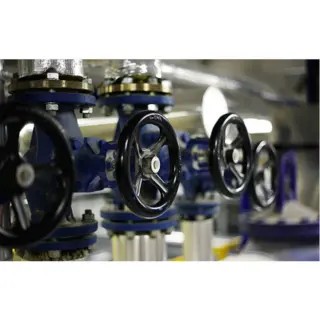Understanding Control Valves: Key to Efficient and Safe Industrial Operations
China Control valves are indispensable elements in modern industrial systems, tasked with regulating the flow, pressure, and temperature of fluids to maintain optimal process conditions. Whether managing water distribution in municipal facilities or controlling steam in power generation plants, control valves are critical to ensuring safe, efficient, and reliable operations. This article explores their importance and working principles in detail.
Why Control Valves Matter
1. Process Optimization
Control valves allow for precise adjustment of fluid parameters, enabling systems to run at peak performance. By modulating flow rates, pressure levels, and temperature, they ensure processes stay within target specifications—improving productivity and minimizing waste across industries from food processing to pharmaceuticals.
2. Safety and System Integrity
In high-stakes industries such as oil and gas, chemical processing, and nuclear power, control valves serve as frontline defenders of safety. They help maintain system balance, preventing conditions that could lead to equipment failure, leaks, or hazardous incidents. Reliable valve operation ensures compliance with strict safety regulations and standards.
3. Energy Efficiency
By controlling flow and minimizing pressure drops, control valves contribute to reduced energy consumption. In applications such as heat recovery or exhaust gas regulation, they play a direct role in lowering operational costs and carbon emissions, supporting sustainability goals and environmental responsibility.
How Control Valves Work
1. Core Components
Control valves are comprised of three main parts:
- Valve Body: The housing through which the fluid flows.
- Actuator: The mechanism that moves the valve's internal components.
- Valve Trim: The internal elements (e.g., plug, ball, or disk) that regulate flow by changing the valve's opening.
2. Control Signals
Valves respond to different types of signals depending on the system:
- Manual: Hand-operated valves in simple or emergency setups.
- Pneumatic or Hydraulic: Pressure-driven signals used in many traditional industrial settings.
- Electronic: Digital or analog signals from programmable logic controllers (PLCs), sensors, or DCS systems for precise and automated control.
3. Modulating Flow
Upon receiving a control signal, the actuator adjusts the valve trim’s position, either opening or closing the passage to modulate fluid flow. For example, in a temperature control system, a sensor might detect a rise in heat, prompting the actuator to open the valve further to increase coolant flow.
Conclusion
Control valves are essential for maintaining the performance, safety, and efficiency of industrial systems. Their ability to regulate flow, pressure, and temperature underpins everything from small-scale batch processes to large-scale continuous operations. A deep understanding of how control valves function and how to select the right type for each application is key to designing and operating effective and sustainable industrial systems.
By embracing advancements in valve technology and automation, industries can further improve control, reduce costs, and meet increasingly stringent environmental and safety standards. Know more about Google SEO Directory





Comments